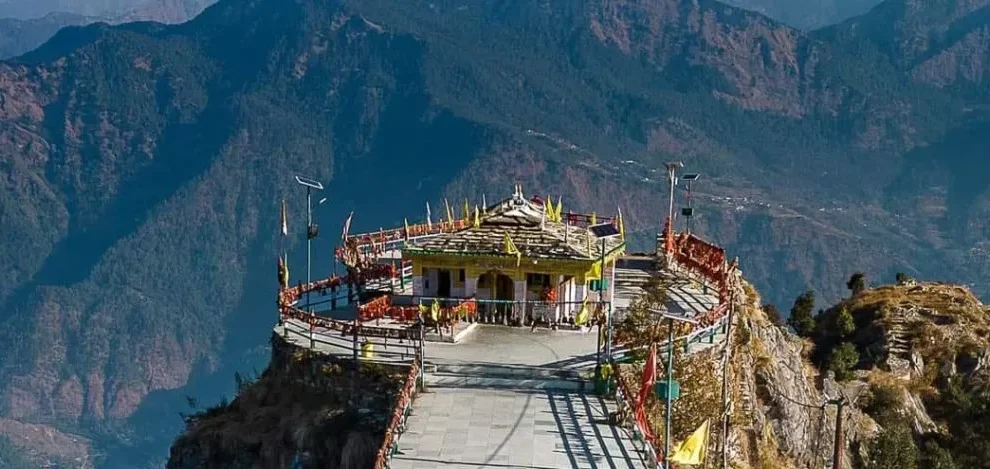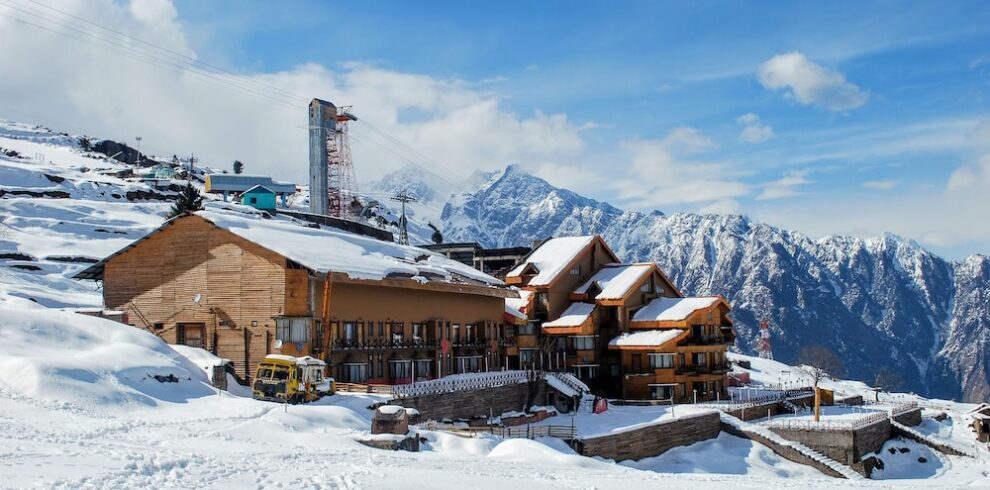Auli and Chopta Tour Packages
Auli :-Auli is India’s premier ski resort destination and it is located in Himalayan range of Chamoli district in Uttrakhand....
Auli is India’s premier ski resort destination and it is located in Himalayan range of Chamoli district in Uttarakhand. It...
Char Dham Tour Package From Haridwar
The Chardham Yatra of Uttarakhand, often called the Chhota Chardham, is one of the holiest pilgrimage circuits in India. It comprises four sacred temples — Yamunotri, Gangotri, Kedarnath, and Badrinath — nestled high in the Himalayas of Garhwal region. These shrines are considered the spiritual sources of four sacred rivers — Yamuna, Ganga, Mandakini, and Alaknanda — and hold immense religious significance in Hinduism.
🛕 1. Yamunotri Dham
Deity: Goddess Yamuna
River Origin: Yamuna River
Location: Uttarkashi District
Yamunotri is the first stop of the Chardham circuit and marks the origin of the sacred River Yamuna, which is said to have emerged from the Champasar Glacier near the peak of Kalind Parvat.
According to Hindu mythology, Goddess Yamuna is the daughter of Surya (the Sun God) and sister of Yama (the God of Death). It is believed that bathing in the waters of Yamuna washes away the fear of death.
The main temple at Yamunotri was originally built in the 19th century by Maharani Guleria of Jaipur and is surrounded by natural hot springs like Surya Kund, where devotees cook rice as an offering to the goddess. The area represents purity, devotion, and the beginning of the Chardham journey.
🕊️ 2. Gangotri Dham
Deity: Goddess Ganga
River Origin: River Ganga (Bhagirathi)
Location: Uttarkashi District
Gangotri is dedicated to Goddess Ganga, the river that is considered the lifeline of India. According to legend, King Bhagirath performed severe penance here to bring the river Ganga down from heaven to purify the ashes of his ancestors. Pleased with his devotion, Lord Shiva received the mighty flow of Ganga in his matted locks, releasing her gently to Earth at Gangotri.
The temple, built in white granite in the early 18th century by Amar Singh Thapa, stands near the river Bhagirathi, a primary tributary of the Ganga. Gangotri represents sacrifice, purity, and liberation, and holds immense spiritual energy for those seeking moksha (salvation).
🔱 3. Kedarnath Dham
Deity: Lord Shiva
River Origin: Mandakini River
Location: Rudraprayag District
Kedarnath is one of the twelve Jyotirlingas of Lord Shiva and the most remote among the Chardham temples. Set against the majestic backdrop of snow-clad Himalayan peaks, Kedarnath is believed to be the place where Lord Shiva absolved the Pandavas of their sins after the Mahabharata war.
According to mythology, Shiva took the form of a bull to avoid them, but when discovered, he dived into the ground — his hump appeared in Kedarnath, while other parts appeared in different locations known as the Panch Kedar temples.
The present temple, built of massive stone slabs, is said to have been constructed by Adi Shankaracharya in the 8th century CE, near an earlier structure built by the Pandavas. Kedarnath symbolizes devotion, endurance, and the union of the soul with the divine.
🌺 4. Badrinath Dham
Deity: Lord Vishnu
River Origin: Alaknanda River
Location: Chamoli District
Badrinath is the last and most celebrated of the four shrines, dedicated to Lord Vishnu in his form as Badri Narayan. The temple lies along the banks of the Alaknanda River, surrounded by the Nar and Narayan mountain ranges.
As per legend, Lord Vishnu meditated here for thousands of years while his consort Goddess Lakshmi protected him by taking the form of a Badri tree (berry tree) — hence the name Badrinath.
The temple was originally established by Adi Shankaracharya in the 8th century and is one of the 108 Divya Desams, the holy shrines of Vishnu mentioned in ancient scriptures. Badrinath represents knowledge, compassion, and salvation.
🕉️ Cultural and Spiritual Significance of Chardham
The Chardham Yatra is believed to cleanse the soul of sins and help attain moksha (liberation).
Each shrine is associated with a different deity and river, forming a divine cycle of creation, preservation, and purification.
The temples open every year around April–May and close around October–November, marking a six-month sacred pilgrimage period.
The journey reflects the spiritual discipline of devotion, endurance, and humility, symbolizing the human journey toward enlightenment.
The region is rich in Himalayan culture, Garhwali traditions, and ancient folklore, blending faith with natural beauty.
✨ In Essence
The Chardham of Uttarakhand is not just a physical journey through mountains — it is a spiritual journey of the soul. Each temple teaches a profound lesson of life — faith from Yamunotri, purity from Gangotri, surrender from Kedarnath, and enlightenment from Badrinath. Together, they form the heart of Hindu spirituality in the Himalayas.



